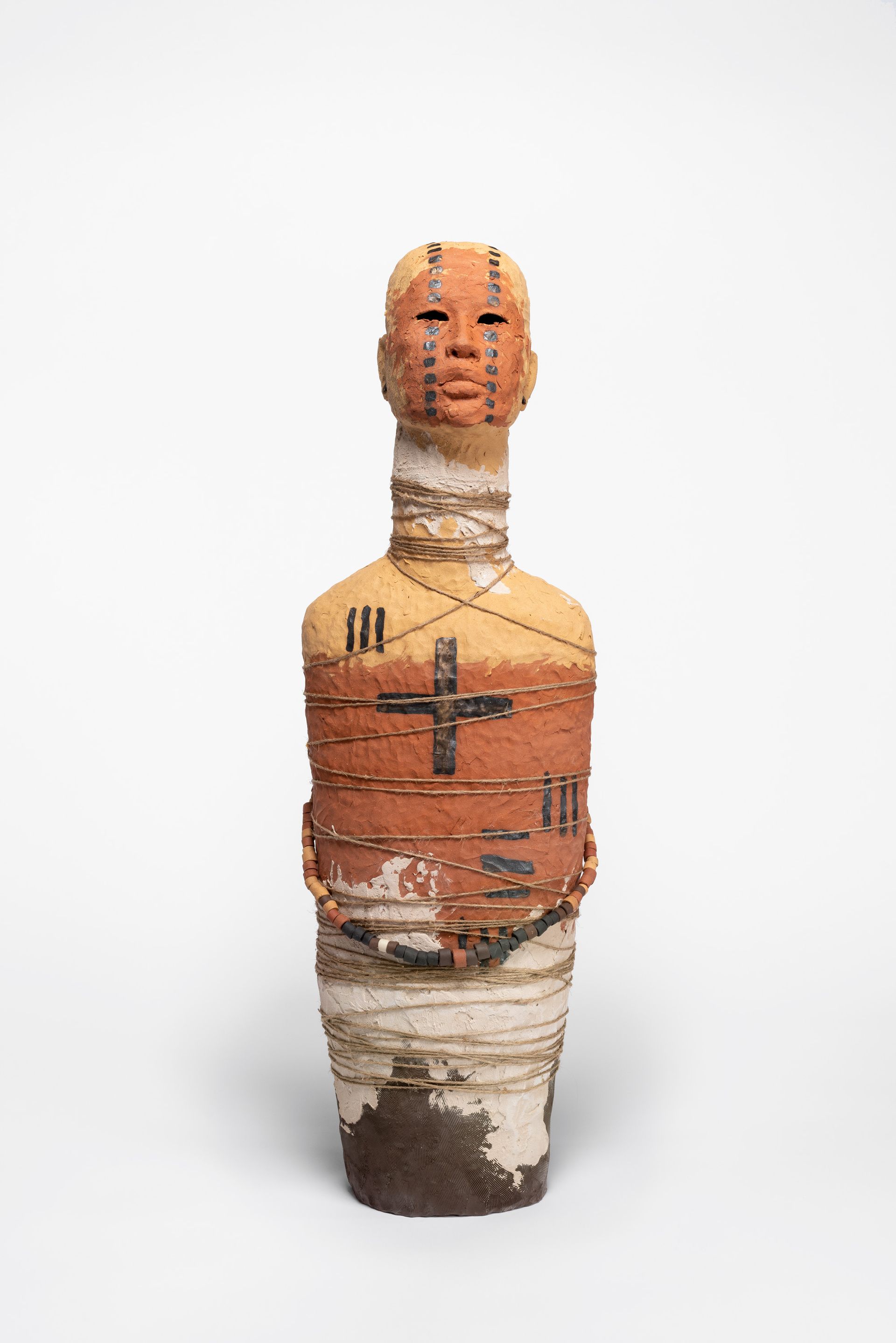The artist Rose B. Simpson, known for her richly detailed ceramic sculptures of elongated and stylised figures, is joining the roster of New York’s Jack Shainman Gallery. The artist’s work across sculpture, installation and performance draws on her heritage as an enrolled member of the Pueblo of Santa Clara in New Mexico, and often incorporates futuristic or even post-apocalyptic imagery. She will continue to be represented by Jessica Silverman in San Francisco.
Simpson’s rising profile and newly bicoastal representation comes amid a growing wave of long overdue recognition and elevation of Indigenous artists within the US art world and beyond. One of the year’s breakout New York solo shows, for instance, was an exhibition of monumental ceramics by Raven Halfmoon, a Montana-based member of the Caddo Nation, at Ross + Kramer Gallery. And in September, the Choctaw-Cherokee artist Jeffrey Gibson joined London’s Stephen Friedman Gallery, his first international representation (in addition to Kavi Gupta in Chicago, Roberts Projects in Los Angeles and Sikkema Jenkins & Co. in New York).
Simpson, who was featured in the summer group exhibition Feedback, curated by Helen Molesworth, at Shainman’s space in Kinderhook, New York, says an interaction with the gallerist during an opening event helped win her over. “My daughter, who at the time was four, was tired from traveling and fell asleep in my lap at this big opening,” she recalls. “Jack found a rocking chair for me and came and sat with me, and we talked about his baby ducks for 45 minutes.”
The opportunity to show alongside other members of Shainman’s roster, which includes many hugely influential artists of colour such as Kerry James Marshall, Toyin Ojih Odutola and Carrie Mae Weems, was also a major factor. “There’s an immense honor to enter into a space that, by all ways and means, being a little kid on the rez in northern New Mexico, I never dreamed of,” she says.
Shainman, who will be showing two new ceramic figures by Simpson in his booth at Art Basel in Miami Beach next week, described the artist as “a singular voice within her generation, creating powerful works that counter stereotypes through intimate explorations of both personal and communal histories”.

Rose B. Simpson, Considerati A (2021) © Rose B. Simpson. Courtesy of the artist and Jessica Silverman, San Francisco and Jack Shainman Gallery, New York
With a growing list of projects on the horizon, the support from a major East Coast gallery is coming at a crucial time for Simpson. She is currently an artist-in-residence at the Fabric Workshop in Philadelphia, where she will open a solo show in September 2022; one month prior she will open a solo exhibition at the Institute of Contemporary Art in Boston. Next autumn, in one of her most ambitious public projects to date, she will install a dozen nine-foot-tall concrete figures with ceramic detailing on the Holmes Reservation near Plymouth, Massachusetts, a symbolically charged location as one of the crucial colonial landing sites that set in motion the genocide of Indigenous people in North America.
For Simpson, the Plymouth project is a continuation of her interest in vessels, whether they be ceramic works shaped around an interior space, massive outdoor pieces or Maria (2014), the 1985 El Camino car that the artist—who holds a degree in custom auto body work as well as an MFA in ceramics from the Rhode Island School of Design—adorned with designs inspired by Hopi-Tewa ceramics. “What is really nice about the vessel is the spectrum of potential expression,” she says. “I make vessels that are figurative ceramic works, that are holding intention, but our bodies are also vessels, what we eat out of is a vessel, the car Maria is a vessel.”
By all indications, her ceramic vessels are resonating with gallerists and collectors alike. Earlier this month, during the Art Dealers Association of America’s (ADAA) New York fair, the Art Show, Silverman sold all three of her sculptures on opening day for $35,000 each. Silverman, who gave Simpson her first West Coast solo show in 2019, described her as “a big-picture, hands-on artist, whose androgynous ceramic figures bring a sense of empathy, embodiment and connectedness to an alienated, digitised, conflicted world”.


